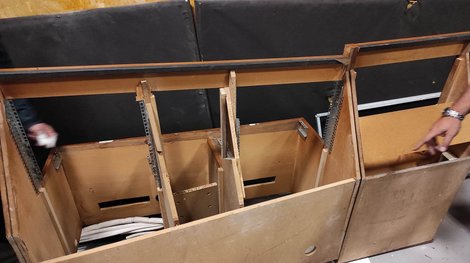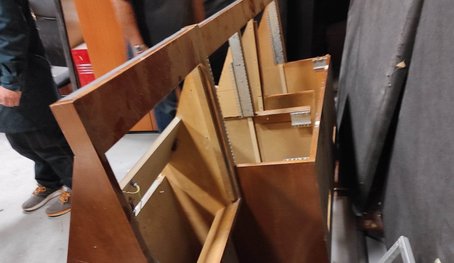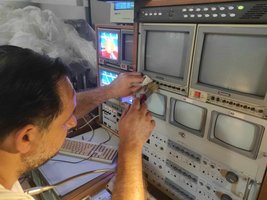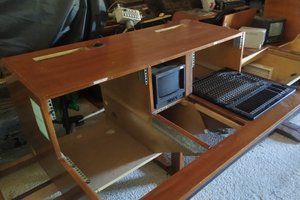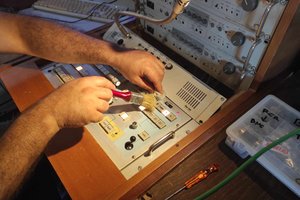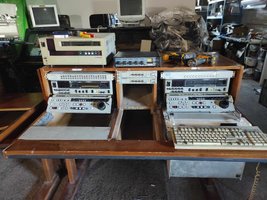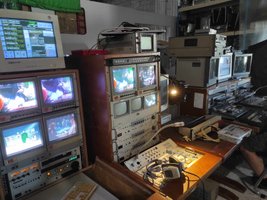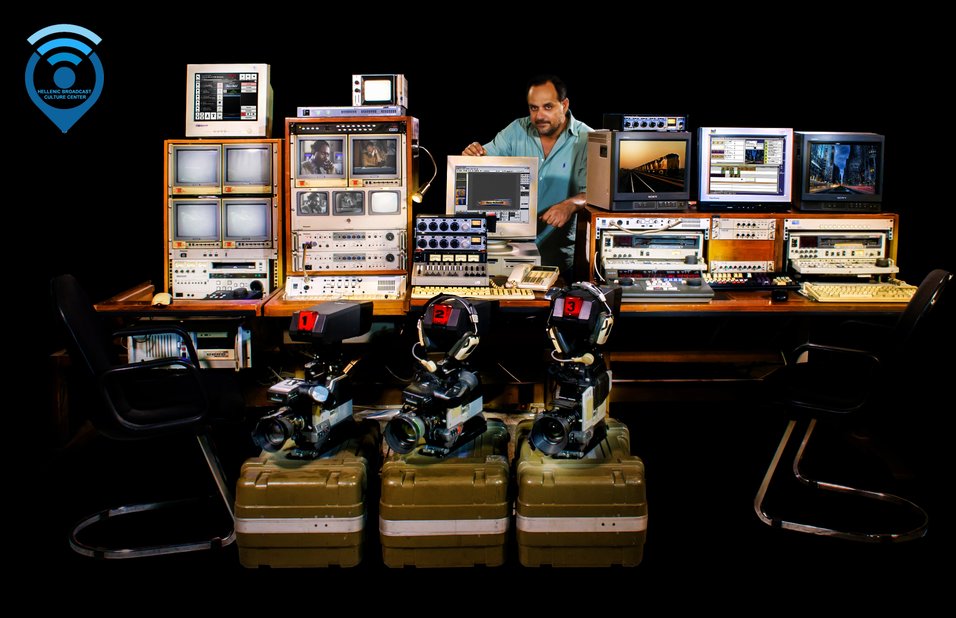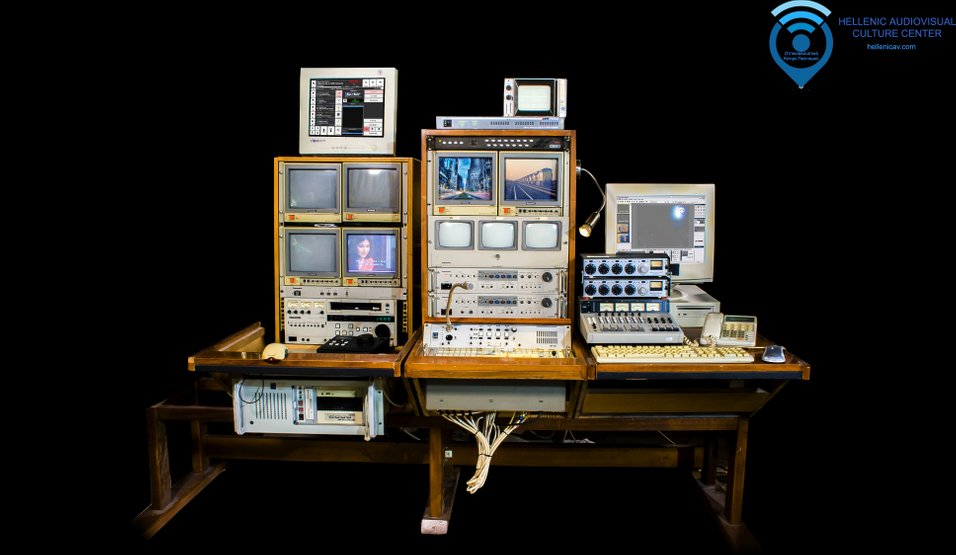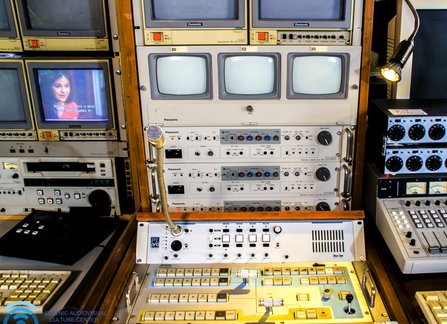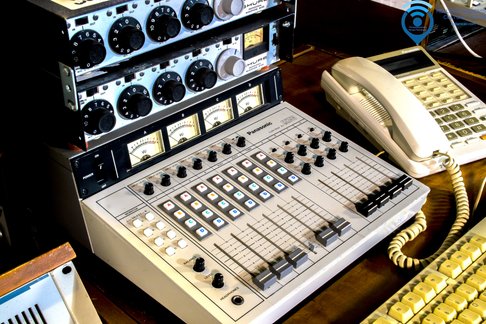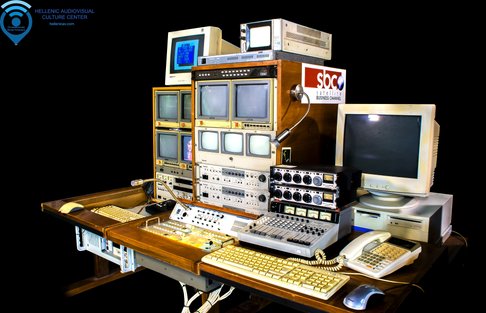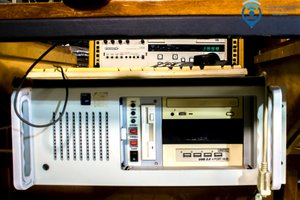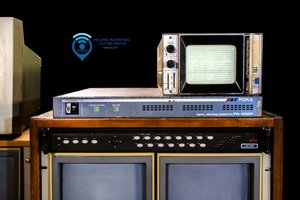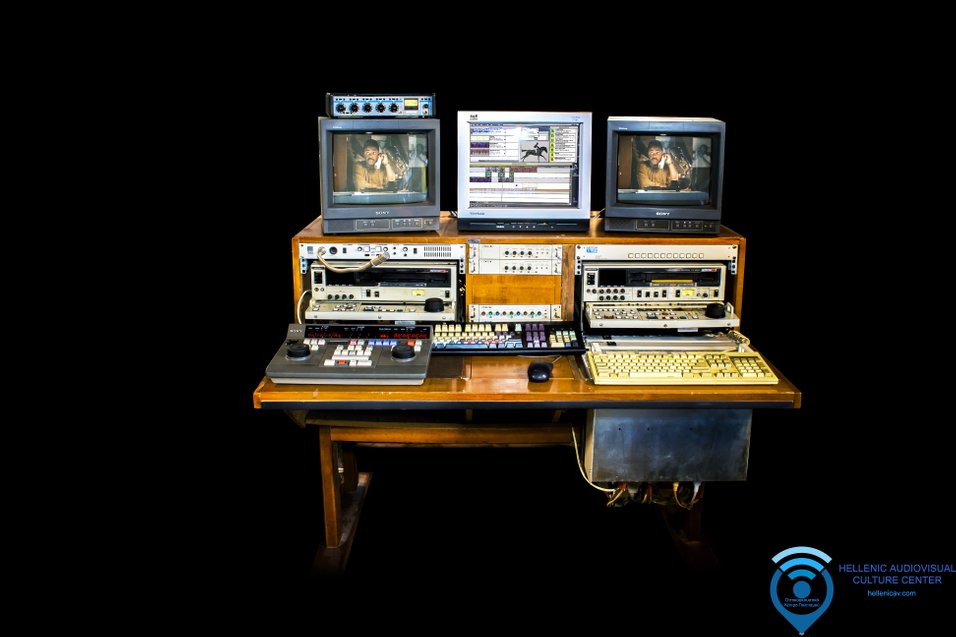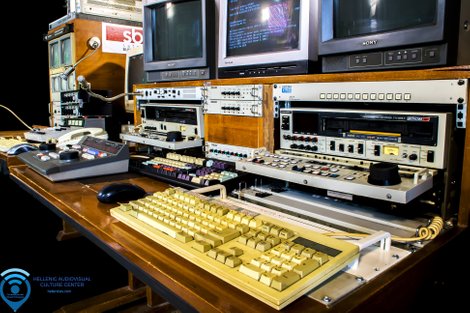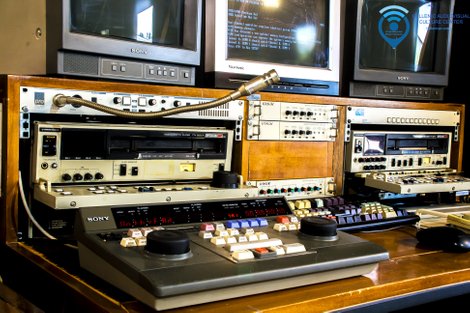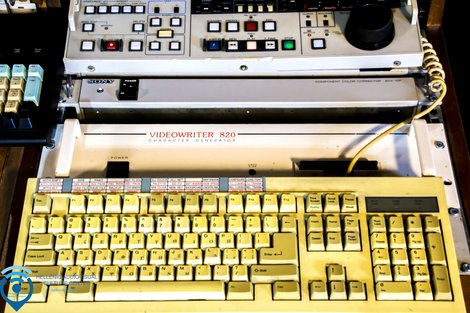Demonstration of Vintage Television Control Room
Reconstruction of SBC TV Studio
The Hellenic Museum of Television History reconstructed in 2023 part of the television studios of SBC TV.
© Copyright - Hellenic Broadcast Culture Center
Research:Vasilis Mistriotis, CEO & Founder of the Hellenic Broadcast Culture Center
Record
In August 2023, the Hellenic Museum of Television History, in the context of the reconstruction of historical machines and television studios, completed a themed control room based on equipment that came from the SBC television station, but also from others such as Europe One of Thessaloniki, Jeronimo Groovy of Athens, as well as and systems that pre-existed in the museum.
Based on an original 1990s TV stand from SBC, the rebuild began. We chose the furniture not to be reconstructed, but to remain with the wear and tear of time, giving the viewer the sense-information of the duration of time that the particular shell had, but also of its reuse 25 years later.
On the contrary, the machines we installed were reconstructed with the aim of their good operation, making the specific control room fully functional. After all, it is a qualification for the Hellenic Television History Museum, in relation to other similar technological museums, the fact that the objects are not only exhibits but historically integrated systems ("chains") that can carry out television productions.
Photos of the gradual evolution of the Control Room before completion.
The reconstruction and operation of the Control Room
The specific control room consists of 2 independent parts, which can operate independently or together. The specific logic lies in the fact that television stations had separate areas for specific technical procedures, on the contrary in a museum the viewer must perceive directly, with an image, the operating philosophy of each exhibit. For this reason, we adopt the exhibition term "Demonstration".
Vasilis Mistriotis at Vintage Broadcast Television Studio Panasonic.
In the first part (left) is placed the production and program flow and in the second part (right) a fully organized editing, beta linear suite.
Production - Flow
The output is analog PAL, based on broadcast equipment from Panasonic, historically documented in terms of the chronological distances of the machines that the company itself proposed in the 1990s. It should be noted that in past decades the machines remained in production even a decade, despite the fact that they also produced new models.
The production consists of a television mixer Panasonic WJ-5500 Special Effects Generator, which is also the "heart" of the television chain. The 3 Panasonic cameras are connected to it
WV-F500/700 along with their studio View Finder, zoom & focus control. Their connection is made through the CCU (Camera Control Unit) Panasonic WV-RC550 and the cables (Multicable 26 pin) also from Panasonic. In this way, all functions such as intercom, tally and camera settings are carried out with a single cable.
The setup is also completed by a Panasonic monitor where the final control and image certification is carried out. At this point, we should mention that image certification through CCUs in "real" television production requires a separate job, but their coexistence is not excluded.
Vintage Control Room Panasonic WJ-5500 Special Effects Generator CCU WV-RC550
To the right of the production, the graphics department and the audio mixer are placed. As for the graphics, the logo generator SAV LGA 200P + LGA100 SOFTWARE w IBM PC has been chosen.
The Panasonic AU-MX50 audio mixer is a special case, as there is absolutely no information or technical manual. However, it is chronologically placed in the 1990s given that it is related to the Panasonic MX50 image mixer.
Panasonic Tv studio control room WJ-5500 Special Effects Generator
Panasonic AU-MX50 Vintage audio mixer
The program stream is placed to the left of the control room, next to production. In the 1990s in Greece, automation playout systems began to be used on a limited scale - gradually replacing the manual program flow, where 24/7 operators changed the cassettes in the videos. The first TV station to use it was Rage TV of Mytilini.
In 1998 a Greek company from Mytilini designed and produced the software ''Jazler tv playout system'', having initially created one of the most successful radio automation programs in the world, Jazler Radio. Their CEO developer, Christos Valasellis, offered the Hellenic Museum of Television History the first version of Jazler Tv which was placed in this particular setup. Although in the 1990s-2000s few Greek television stations had an automated playout system, its installation in the control room was qualified since historically.
The representation of the program flow faithfully follows the broadcast philosophy of the time and together with the Jazler a Panasonic SVHS is installed for safety reasons in case the PC encounters a problem during the broadcast. In the same rack there is also a switcher (video source selector) to separate the video and audio sources of the live production and the program stream. As an additional option, SVHS feeds in addition to video streaming and mixing for displaying TV spots or broadcast titles in eventual video recording.
Program Control & Flow. The logo of the television station SBCTV, was found lying on the floor of the channel and we placed it in the reconstructed studio. (photos 2023)
Panasonic WJ-5500 Special Effects Generator
Jazler tv playout - First edition, donated by H. Valaselli
logo generator SAV LGA 200P + LGA100 SOFTWARE w IBM PC.
Editing - Beta linear editing
As we mentioned above, this particular vintage control room consists of two independent parts, which can operate independently or together.
In the second part of the control room (right) is delineated the editing consisting of two beta videos Sony TTV 3565p and Sony TTV3575P together with the Sony PVE-500 Editing Control Unit. The editing setup is completed by two Signal Mng & Process Program/Framestore Sony BVR-58 color calibrations, two Sony BVR-50 remote control TBC Synchronizers, as well as audio mixing.
Due to the existence of flow automation, it was decided to place a non-linear editing pc with a matrox card in the editing room that takes over the digitization of the beta tapes in order to feed the playout system with digitized videos.
The editing is completed with a machine designed and assembled by a Greek. This is the character generator "Relec videowriter 820 character generator" created by Michalis Rizos.
This particular machine comes from National Television Channel ERT3 and was found in the trash being classified as scrap. It is interesting to note that while it was damaged, it was not only reconstructed but many news titles, scrolls, etc. were also saved.
In a telephone conversation with the creator of "Relec videowriter 820", Mr. Michalis Rizos, he told us that at the time he designed and built this particular machine, there was a great demand from Greek video film production companies that create beginning and end titles and also lowerthirds.
"Relec videowriter 820 character generator"
Many news titles, scrolls, etc. were also saved.
The graphic generator Relec videowriter 820 character generator, was designed by the Greek Technician Michalis Rizos.
© Copyright - Hellenic Broadcast Culture Center
Research:Vasilis Mistriotis, CEO & Founder of the Hellenic Broadcast Culture Center

